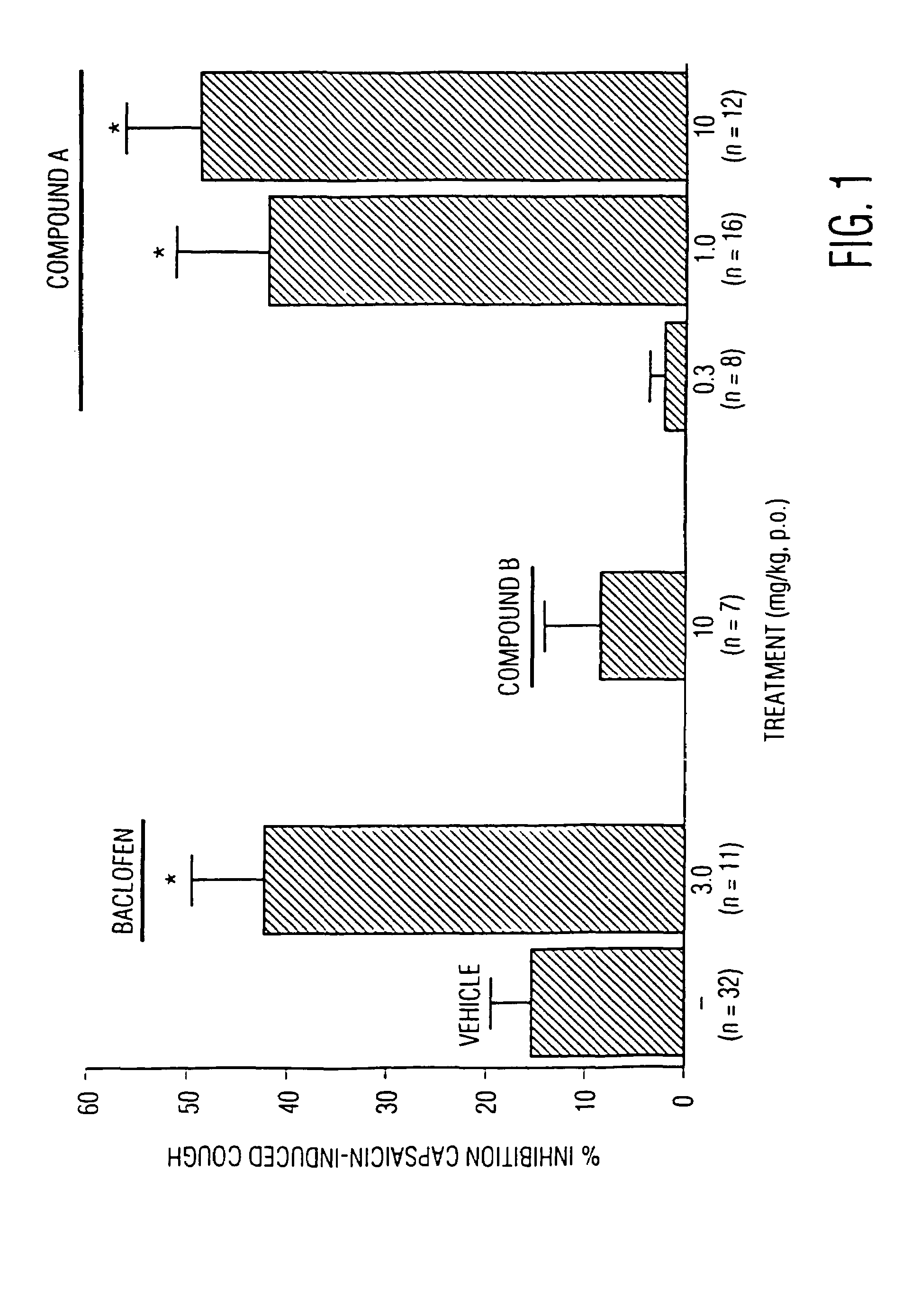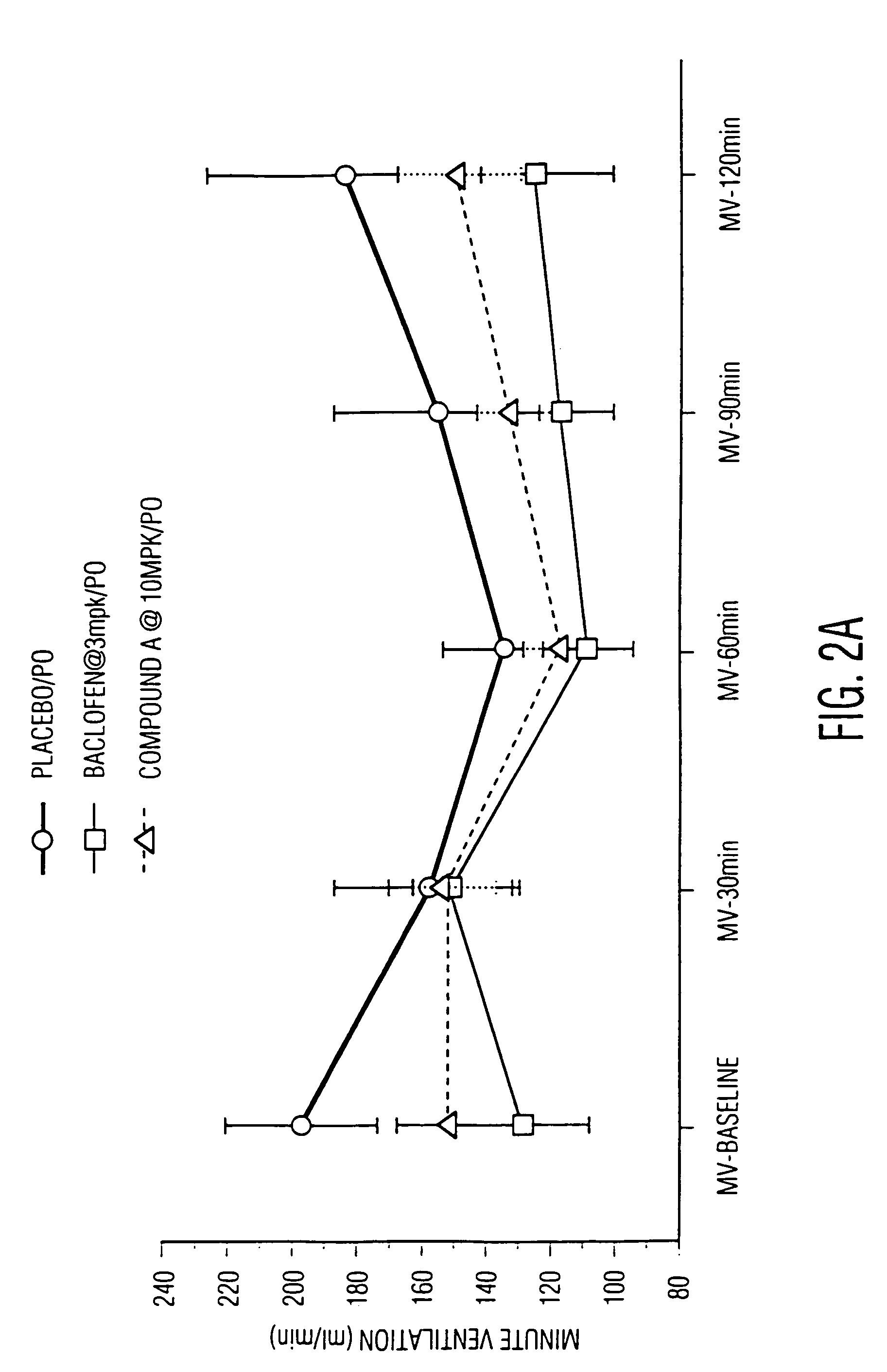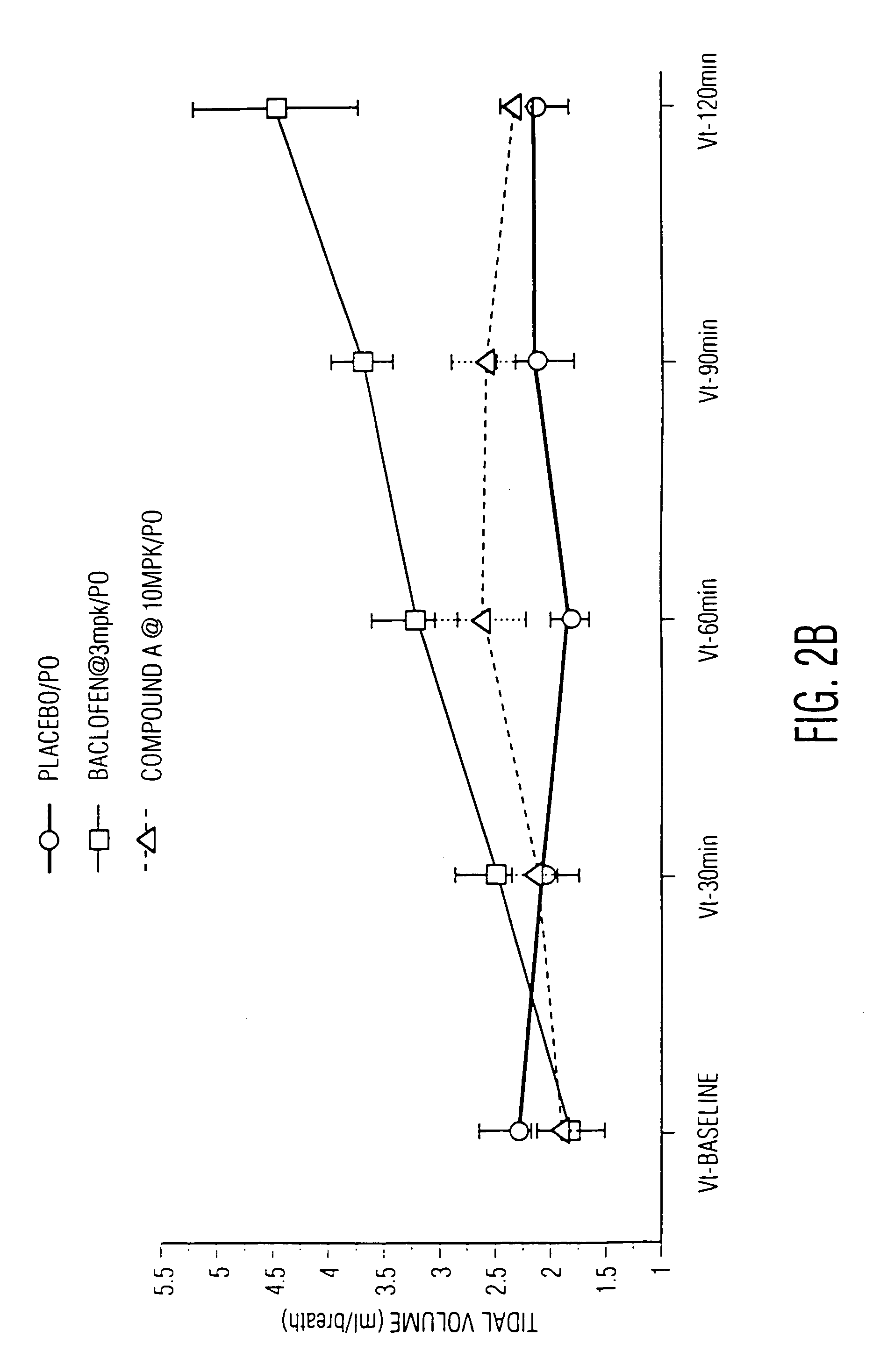High affinity ligands for nociceptin receptor ORL-1
a nociceptin receptor, high affinity technology, applied in the direction of biocide, immunodeficiency disorder, drug composition, etc., can solve the problems of limiting the dose of opioids that can be administered, potent analgesic agents such as traditional opioids, e.g. morphine, and endogenous opioids that fail to activate the nociceptin receptor
- Summary
- Abstract
- Description
- Claims
- Application Information
AI Technical Summary
Benefits of technology
Problems solved by technology
Method used
Image
Examples
example 1
[0112]
[0113]A mixture of 4-hydroxy-4-phenyl piperidine (1.5 g, 8.47 mmol) and K2CO3 (3.0 g, 21.73 mmol) in CH3CN was stirred at rt. To this was added α-bromo-diphenylmethane (2.5 g, 10.12 mmol) and the reaction was stirred overnight. The reaction mixture was concentrated, redissolved in CH2Cl2,washed with water, dried (MgSO4) and concentrated. Chromatography (SiO2, 9:1 hexane / EtOAc) gave the title compound (2.6 g, 90%). 1H NMR (CDCl3): δ 1.80 (m, 2H), 2.25 (m, 2H), 2.42 (m, 2H), 2.90 (m, 2H), 4.40 (s, 1H), 7.2–7.6 (m, 15H).
example 2
[0114]
Step 1: A solution of 4-piperidone monohydrate hydrochloride (5 g, 32.6 mmol) in CH3CN was alkylated using the procedure described in Example 1. Chromatography of the residue on silica (95:5 hexane / EtOAc) gave the desired compound.
Step 2: 4-Methylphenylmagnesium bromide (0.5 M in THF, 1.75 ml, 0.87 mmol) was added to a solution of product of Step 1 (191 mg, 0.72 mmol) in THF dropwise at 0° C. The solution was stirred at 0° for 2 h, quenched with ice-H2O, extracted with EtOAc, washed with H2O and brine, dried, and concentrated. Chromatography of the residue on silica (95:5 hexane / EtOAc, 93:7 hexane / EtOAc) gave the title compound (0.091 g, 30%). 1H NMR (CDCl3) δ 7.5 (m, 6H, ArH), 7.3 (t, 4H, ArH), 7.2 (t, 4H, ArH), 4.35 (s, 1H), 2.8 (d, 2H), 2.4 (m, 5H), 2.2 (td, 2H), 1.75 (d, 2H); MS (Cl) 358 (M+1); Elemental analysis for C25H27NO.1.2 H2O: calcd: C, 79.2; H, 7.82; N, 3.69; observed: C, 78.90; H, 8.02; N, 3.85.
example 3
[0115]
[0116]Add n-BuLi (2.5 M, 0.38 ml. 0.95 mmol) to a solution of 3-bromo-thiophene (0.15 g, 0.95 mmol) in Et2O dropwise at −70° C. and stir for 2 h. Add a solution of the product of Step 1 of Example 2 (230 mg, 0.87 mmol) in Et2O (4 ml) to the reaction mixture, slowly warm to rt over a period of 3 h, quench with ice-cooled NH4Cl (aq), extract with Et2O, wash with H2O and brine, dry, and concentrate. Chromatograph the residue (95:5 hexane / EtOAc) to give the title compound (90 mg). 1H NMR (CDCl3) δ 7.5 (d, 2H), 7.35 (bt, 4H), 7.25 (m, 3H), 7.2 (m, 2H), 4.4 (s, 1H), 2.8 (d, 2H), 2.5 (t, 2H), 2.3 (dt, 2H), 2.0 (d, 2H); MS (Cl) 350 (M+1); Elemental analysis for C22H22NOS.1.1 HCl.0.9 H2O: calcd: C, 65.11; H, 6.43; N, 3.54; S, 7.8; Cl, 9.61; observed: C, 65.27; H, 6.54; N, 3.45; S, 7.30; Cl, 9.43.
PUM
 Login to View More
Login to View More Abstract
Description
Claims
Application Information
 Login to View More
Login to View More - R&D
- Intellectual Property
- Life Sciences
- Materials
- Tech Scout
- Unparalleled Data Quality
- Higher Quality Content
- 60% Fewer Hallucinations
Browse by: Latest US Patents, China's latest patents, Technical Efficacy Thesaurus, Application Domain, Technology Topic, Popular Technical Reports.
© 2025 PatSnap. All rights reserved.Legal|Privacy policy|Modern Slavery Act Transparency Statement|Sitemap|About US| Contact US: help@patsnap.com



